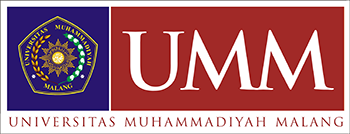The Role of Institutional Design and Enabling Environmental: Collaborative Governance of a Pilgrimage Tourism, Indonesia
DOI:
https://doi.org/10.22219/logos.v6i1.22218Keywords:
stakeholder; collaborative governance; pilgrimage tourism; sustainableAbstract
This article discusses the role of stakeholders from the descendants of Kings, who collaborated with the government and private sectors in managing of the pilgrimage tourism heritage site of the tomb of the Kings of Asta Tinggi, in Sumenep district. The purpose of this study was to investigate the various factors that influence stakeholder collaborations in the management of sustainable pilgrimage tourism and which stakeholder groups have a sustained traditional of authority. This qualitative research uses a case study approach and data collection through in-depth unstructured interviews and observations. This study seeks to take a new perspective in the analysis of the collaborative governance theory in the face of the social environment factor. The study results show that stakeholders, facilitative leadership, and enabling environmental factors become resources and strengths in the success of collaborative governance even though the role of private and government sectors are still limited. The findings reveal that stakeholders from the community, namely the traditional group as a companion of pilgrims, have an important role in collaboration, because they can only be replaced by the descendants, while the collaborative initiation comes from the community. We suggest the importance of government initiation to expand collaboration networks and facilitate the formation of the institutional administrator of Asta Tinggi site, through reconciliation which represents two descendants of Kings. The findings of this study are expected to enrich the theory of collaborative governance.
Downloads
References
Adeney-Risakotta, B. (2016). Traditional, Islamic and National Law in the Experience of Indonesian Muslim Women†. Islam and Christian-Muslim Relations, 27(3), 303–318. https://doi.org/10.1080/09596410.2016.1186422
Al-Dalaeen, M. A. ; Alsarayreh, M. N. ;, & Saleh, A. S. A. (2011). Religious tourism to the historical sites (Karak case study). International Journal of Academic Research, 3(6), 60–68.
Ansell, C., & Gash, A. (2008). Collaborative governance in theory and practice. Journal of Public Administration Research and Theory, 18(4), 543–571. https://doi.org/10.1093/jopart/mum032
Aukland, K. (2017). Pilgrimage expansion through tourism in contemporary India: the development and promotion of a Hindu pilgrimage circuit. Journal of Contemporary Religion, 32(2), 283–298. https://doi.org/https://doi.org/10.1080/13537903.2017.1298908
BPS, I. (2016). Statistik Indonesia 2016.
Christie, J. J. (2019). Wak’a/shrine making and pilgrimage tourism in Copacabana, Bolivia. Tourism Geographies, 21(3), 482–507. https://doi.org/10.1080/14616688.2019.1600005
Costa, T. G., Richter, F. A., Castro, E. T., Gonçalves, S., Spudeit, D. A., & Micke, G. A. (2018). Elemental identification of blue paintings traces present in historic cemeteries in the São Martinho region, southern Brazil. Journal of Molecular Structure, 1155, 434–442. https://doi.org/10.1016/j.molstruc.2017.11.027
Creswell, J. W., & Creswell, J. D. (2017). Research Design: Qualitative, Quantitative, and Mixed Methods Approaches. London: Sage Publications.
Durán-Sánchez, A., Del Río-Rama, M. D., Oliveira, C., & Álvarez-García, J. (2019). Religious Tourism and Pilgrimage: Study of Academic Publications in Scopus. Handbook of Research on Socio-Economic Impacts of Religious Tourism and Pilgrimage. https://doi.org/http://doi:10.4018/978-1-5225-5730-2.ch001
Egresi, I., Kara, F., & Bayram, B. (2012). Economic impact of religious tourism in Mardin, Turkey. Journal of Economics and Business, 2, 7–22. http://papers.ssrn.com/sol3/Delivery.cfm?abstractid=2184124#page=7
Emerson, K., Nabatchi, T., & Balogh, S. (2012). An integrative framework for collaborative governance. Journal of Public Administration Research and Theory, 22(1), 1–29. https://doi.org/10.1093/jopart/mur011
Erkuş-Öztürk, H., & Eraydin, A. (2010). Environmental Governance for Sustainable Tourism Development: Collaborative Networks and Organisation Building in the Antalya Tourism Region. Tourism Management, 31(1), 113–124. https://doi.org/10.1016/j.tourman.2009.01.002
Farahani Zamani, H., & Eid, R. (2016). Muslim world: A Study of Tourism & Pilgrimage Among OIC Member States. Tourism Management Perspectives, 19, 144–149. https://doi.org/https://doi.org/10.1016/j.tmp.2015.12.009
Farida, F., Zulaikha, Z., & Putro, H. E. (2020). Desentralisasi Wisata Religi Indonesia Melalui City Branding Wisata Kabupaten Bangkalan Madura. Bricolage : Jurnal Magister Ilmu Komunikasi, 6(02), 223. https://doi.org/10.30813/bricolage.v6i02.2149
Jawabreh, O. A. (2017). Distinction of Jordan As A Destination For Religious Tourism. Journal of Environmental Management and Tourism (JEMT), 8(6), 1171–1182. https://doi.org/10.14505//jemt.v8.6(22).03
Kato, K., & progano nicolas, R. (2017). Spiritual (Walking) Tourism As A Foundation For Sustainable Destination Development: Kumano-Kodo Pilgrimage, Wakayama, Japan. Tourism Management Perspectives, 24, 243–251. https://doi.org/https://doi.org/10.1016/j.tmp.2017.07.017
Kurniawan, Zauhar, & Hermawan. (2012). Kemitraan Pengelolaan Sektor Pariwisata (Studi Pada Tirta Wisata Kabupaten Jombang). Jurnal Administrasi Publik Mahasiswa Universitas Brawijaya, 1(1), 47–55.
Liutikas, D. (2020). Management of Pilgrimages in Lithuania: Resources, Stakeholders and Projects. International Journal of Religious Tourism and Pilgrimage, 8(2), 45–61.
Masduki, A. (2018). Pilgrimage as a New Way to Define and Characterize the Sainthood. DINIKA : Academic Journal of Islamic Studies, 3(2), 221. https://doi.org/10.22515/dinika.v3i2.114
Miles, M. B., Huberman, A. M., & Saldaña, J. (2014). Qualitative data analysis: A methods sourcebook. 3rd. London:Sage Publications, Inc.
Mundt, C. A. (2016). Motivation and Behaviour in Cemetery Tourism: A Case Study of Glasnevin Cemetery, Dublin, Ireland. School of Biology and Environmental Science, July. https://doi.org/10.13140/RG.2.2.19436.97926
Nashuddin. (2016). The management of muslim spiritual tourism in lombok, Indonesia: Opportunities and challenges. Journal of Indonesian Islam, 10(2), 213–236. https://doi.org/10.15642/JIIS.2016.10.2.213-236
Nouri Kouchi, A., Zarra Nezhad, M., & Kiani, P. (2018). A study of the relationship between the growth in the number of Hajj pilgrims and economic growth in Saudi Arabia. Journal of Hospitality and Tourism Management, 36, 103–107. https://doi.org/10.1016/j.jhtm.2016.01.008
Qomariyah, A. (2019). Penerapan Nilai-nilai Etika Bisnis Islam Dalam Pengelolaan Wisata Religi di Cirebon (Studi Kasus: Objek Wisata Makam Sunan Gunung Djati). Skripsi: Instititut Agama Islam Bunga Bangsa Cirebon.
Radisavljevi, D. (2014). Mixed Pilgrimage in Serbia: the Case of Two Sanctuaries (Đunis and Tekije). State Religion Chruch, 32(2),139–160.
Roberts, D., Van, W.-R., & Dhanpat, N. (2016). Pillar Practices for Effective Collaboration. September. Proceedings of the 28th Annual Conference of the Southern African Institute of Management Scientists, 66–94.
Santos, C. M., Ambrósio, V., Correia, A., & Peres, R. (2013). The importance of religious tourism segmentation for tourism destination management: The Case of the Island. World Review of Entrepreneurship, Management and Sustainable Development, 9(2), 166–178. https://doi.org/10.1504/WREMSD.2013.052357
Shinde, K. (2012). Policy, planning, and management for religious tourism in Indian pilgrimage sites. Journal of Policy Research in Tourism, Leisure and Events, 4(3), 277–301. https://doi.org/10.1080/19407963.2012.726107
Simone-Charteris, M. T., & Boyd, S. W. (2010). The development of religious heritage tourism in Northern Ireland: Opportunities, benefits and obstacles. Tourism, 58(3), 229–257.
Suaibah, L. (2017). Analisis Kepuasan Peziarah Terhadap Objek Wisata Religi Makam Syaikhona. Jurnal Pamator, 10(2), 146–151. https://doi.org/10.21107/pamator.v10i2.4149
Subianto, A., & Kurniawan, D. C. (2021). Democracy, Trust And Commitment In In Collaborative Management : Indonesia ’ S Colonial Heritage Cemetery. Academy of Strategyc Managaement Journal, 20(2), 1–12.
Syam, S. (2018). Tradisionalisme Islam Suatu Karakter Dan Pola Pengembangan Islam Di Indonesia. Al-Hikmah: Jurnal Dakwah Dan Ilmu Komunikasi, 5(1), 20–30. https://doi.org/10.15548/al-hikmah.v0i0.90
Takdir Ilahi, M. (2016). Ziarah Dan Cita Rasa Islam Nusantara: Wisata Religius Dalam Bingkai Kearifan Lokal (Local Wisdom).
Wantara, P. (2016). Effect of Service Quality and Perceived Value Satisfaction and Loyalty Religious Tourists Visit Island Madura, Indonesia. AFEBI Management and Business Review, 1(1), 55. https://doi.org/10.47312/ambr.v1i1.30
Zamani-Farahani, H., & Eid, R. (2016). Muslim World: A study of Tourism & Pilgrimage Among OIC Member States. Tourism Management Perspectives, 19, 144–149. https://doi.org/10.1016/j.tmp.2015.12.009
Downloads
Published
How to Cite
Issue
Section
License
Copyright (c) 2023 Agus Subianto, Moh Musleh, M. Husni Tamrin, Mohammad Reevany Bustami

This work is licensed under a Creative Commons Attribution-ShareAlike 4.0 International License.
Authors who publish with this journal agree to the following terms:
- Authors retain copyright and grant the journal right of first publication with the work simultaneously licensed under a Creative Commons Attribution-ShareAlike 4.0 International License. that allows others to share the work with an acknowledgment of the work's authorship and initial publication in this journal.
- Authors are able to enter into separate, additional contractual arrangements for the non-exclusive distribution of the journal's published version of the work (e.g., post it to an institutional repository or publish it in a book), with an acknowledgment of its initial publication in this journal.
- Authors are permitted and encouraged to post their work online (e.g., in institutional repositories or on their website) prior to and during the submission process, as it can lead to productive exchanges, as well as earlier and greater citation of published work (See The Effect of Open Access).

This work is licensed under a Creative Commons Attribution-ShareAlike 4.0 International License.













